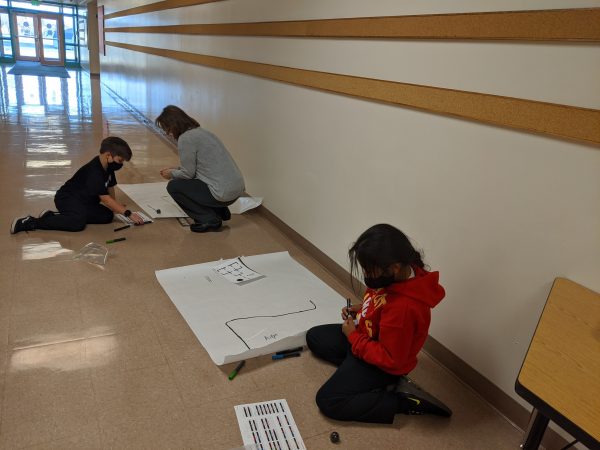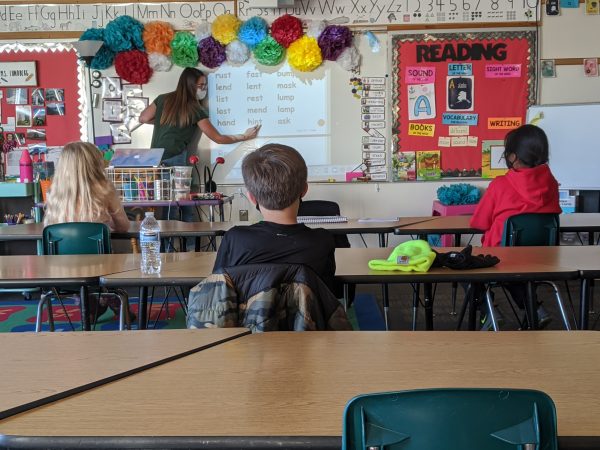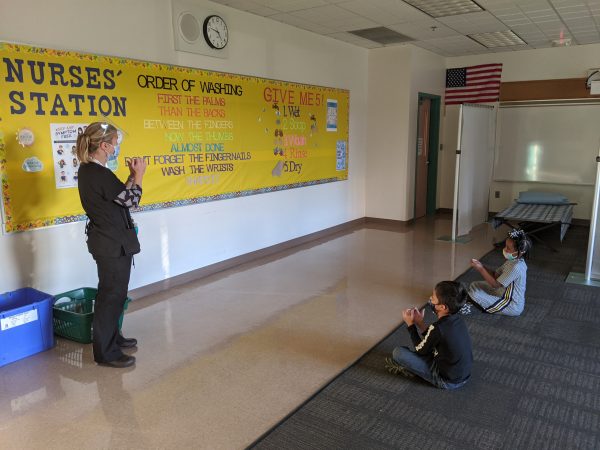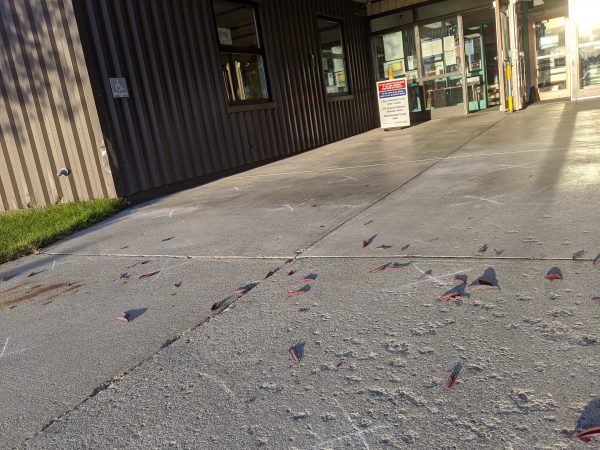
After school at Aurora Elementary, seven-year-old Aidyn explained how he uses colors to code a mini robot and make it move across a piece of paper.
“So I did black, blue to be fast,” he said. “And then it followed the instructions for this path and then it will show the light blue, black, blue, black, blue.”
Aidyn is one of 27 students participating in an after school tutoring program at Aurora located on Joint Base Elmendorf Richardson.
In the program, which is for first and second graders, students can go the school building after attending school online during the day and work with teachers on reading and math skills and do enrichment activities like coding.
Aurora Principal Anna Walker said when the opportunity to start the program came up, she thought it was a good idea.
“Some of our students are thriving in online learning. And some just need to be doing a face to face.”

This is one of six schools in the district running tutoring programs. And they’ve been going for almost a month now.
In addition to Aurora, there are programs at Chester Valley Elementary, Creekside Park Elementary, Muldoon Elementary, Spring Hill Elementary, and Willow Crest Elementary.
Although the tutoring program currently serves just a fraction of the district’s more than 40,000 students, the district is pointing to it as an example of what in-person schooling could look like during the pandemic.
Diane Orr is the Director of K-12 Teaching and Learning for the district. She said the program was needed to help shore up younger students’ reading ability.
“It’s now settled science that young students need explicit systematic phonics instruction,” Orr said. “It is so important in those younger grades K, 1, 2, that this type of instruction is provided for them, and we also know it’s easier to teach that phonics instruction in a face to face environment.”
The tutoring program serves another purpose for the district.
“The program was also designed to help us bring in a small group of students to be able to practice those best evidenced, safety and health protocols, so that we know when we return to school, what we have to do.”

Orr said she is not aware of any COVID-19 cases among students in the program and while more than 100 people related to the district are currently in quarantine, the district said there has not been any transmission of the coronavirus within school environments or activities.
Even though Anchorage’s covid case counts are the highest they’ve ever been, the district has said it can’t keep students out of the classroom any longer.
At a school board meeting earlier this month, Superintendent Deena Bishop became emotional when assessing the district’s current ability to educate students after more than six months of distance learning.
“We are not doing a good job of educating our young people with distance delivery,” she said.”
Schools that have reopened to in-person learning have gone through a bit of a seesaw having to close and reopen due to student cases.
Recently, dozens of schools were closed across the Kenai and Mat-Su school districts due to coronavirus cases which some critics of the district’s reopening plan say is too disruptive to student’s education.
But, as the school year goes on across the country and around the world, more evidence suggests that school sites are not the superspreaders many initially thought they would be, and students are most often contracting the disease from outside the school environment.
Walker at Aurora Elementary said she’s been surprised at how well the students have taken to the new safety protocols. Students are even starting to correct each other.

“For example, students lined up and one of the students said, ‘Oh, wait, we need to be six feet apart, make sure that they’re six feet apart!'” Walker said. “They are becoming so understanding of the importance of following the rules, that I honestly see that coming face to face, while it might bring some challenges, I think our kids are very cognizant of things that they have to do.”
Walker said staff spent the first week of the program going over the new protocols with students, and teachers are giving constant reminders telling students to keep masks above their nose, using elbow and foot bumps to show excitement, and even developed a new handwashing song.
Walker said she’s making other changes to the school as well — turning one classroom into a quarantine room that Walker hopes she “never has to use,” where students who show up to school with symptoms can wait until a parent can come pick them up. She’s also turning a science room into another general education classroom in case they need the additional space in order to social distance.

“I want to be prepared,” she said.
The program is successful so far, Walker said, and she believes she made the right decision with the program. She’s optimistic that it can scale to include more students.
“Our kids are thriving, and we’re noticing that the kids who come in to this program, they are very happy, they want to be here, they interact with each other,” Walker said. “It’s another important piece, I think, that gives them that social interaction that they really need at this at this age.”
The district plans to allow special needs students and students in pre-K through second grade back into school buildings on November 16.




